The historical origin of hand-brewed coffee who invented the use of coffee cup filter paper?

As a coffee brewing method that is popular all over the world, hand brewing has become an extraction method used by more and more people to explore the aroma of coffee. Almost every coffee fan has a set of hand brewing equipment in their home. Whenever I have free time, I will choose one of my favorite coffee and pour it into a pot. Weigh coffee beans, grind, fold filter paper, wet filter cup, pour powder, circle water injection, taste …... Every move fills his cup of coffee with a sense of ritual.
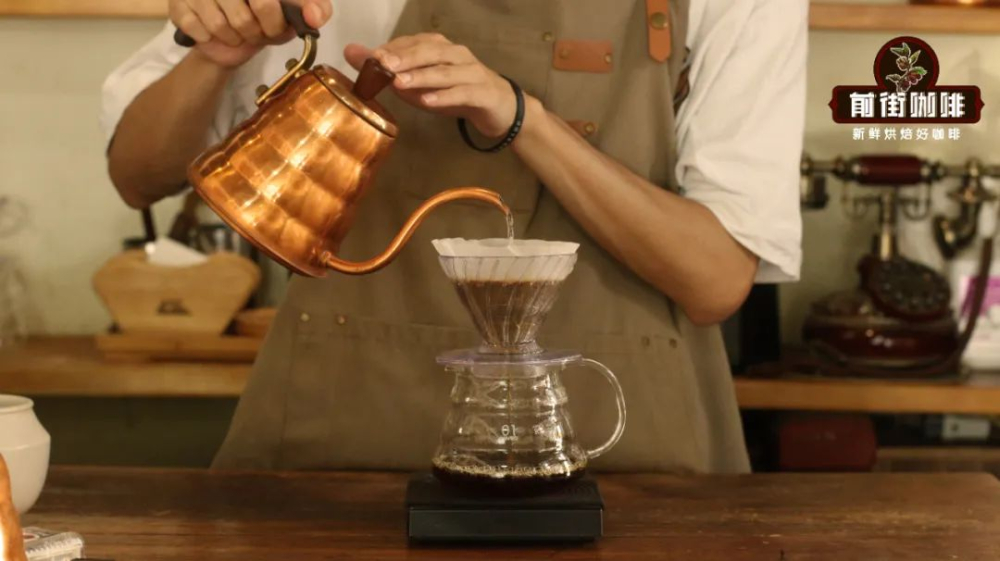
So, do you, who often make coffee, know the origin of this trickle extraction? This article takes you to discuss the history of hand-brewed coffee and all kinds of classic filter cups.
The origin of the filter cup
For a long time, people around the world made coffee in a simple and rough way: grind the beans and boil them in a kettle, then sift the dregs with linen or metal strainer and drink them directly. Limited to the level of production technology at that time, the filter can not make enough fine pores, so even the filtered coffee liquid often contains a lot of dregs.
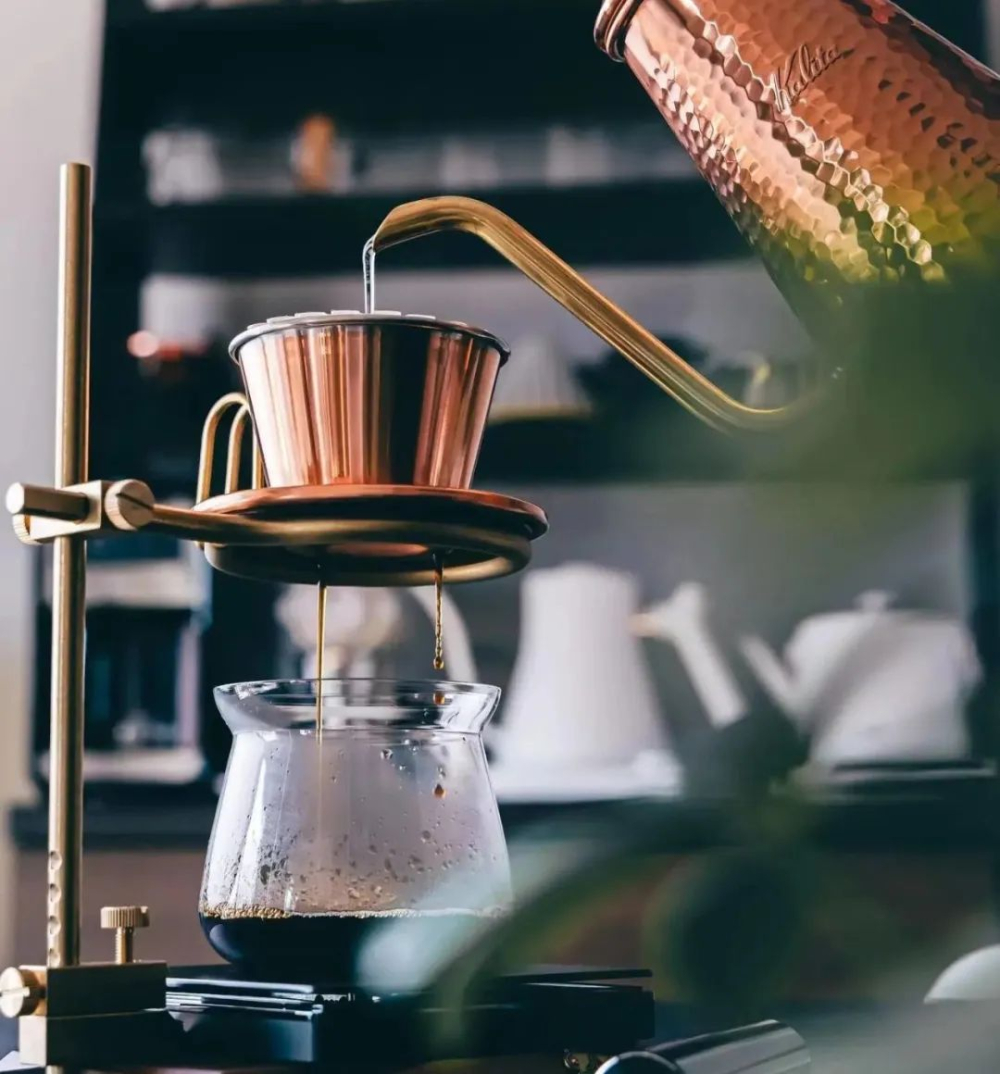
Until the 20th century, a German woman named Amalie Auguste Melitta Bentz liked to brew coffee, but she found the coffee with a traditional filter bitter and bitter, and the coffee grounds left between her teeth affected the taste. As a result, Ms. Melita began to try new ways to make coffee, hoping to solve the problem of filter residue, and finally came up with an idea:
Punch the bottom of a copper jar into a container similar to a sieve, then put a piece of blotting paper on it, put it into the ground coffee powder, pour it into hot water, and the coffee liquid drips into the copper pot through the blotting paper.
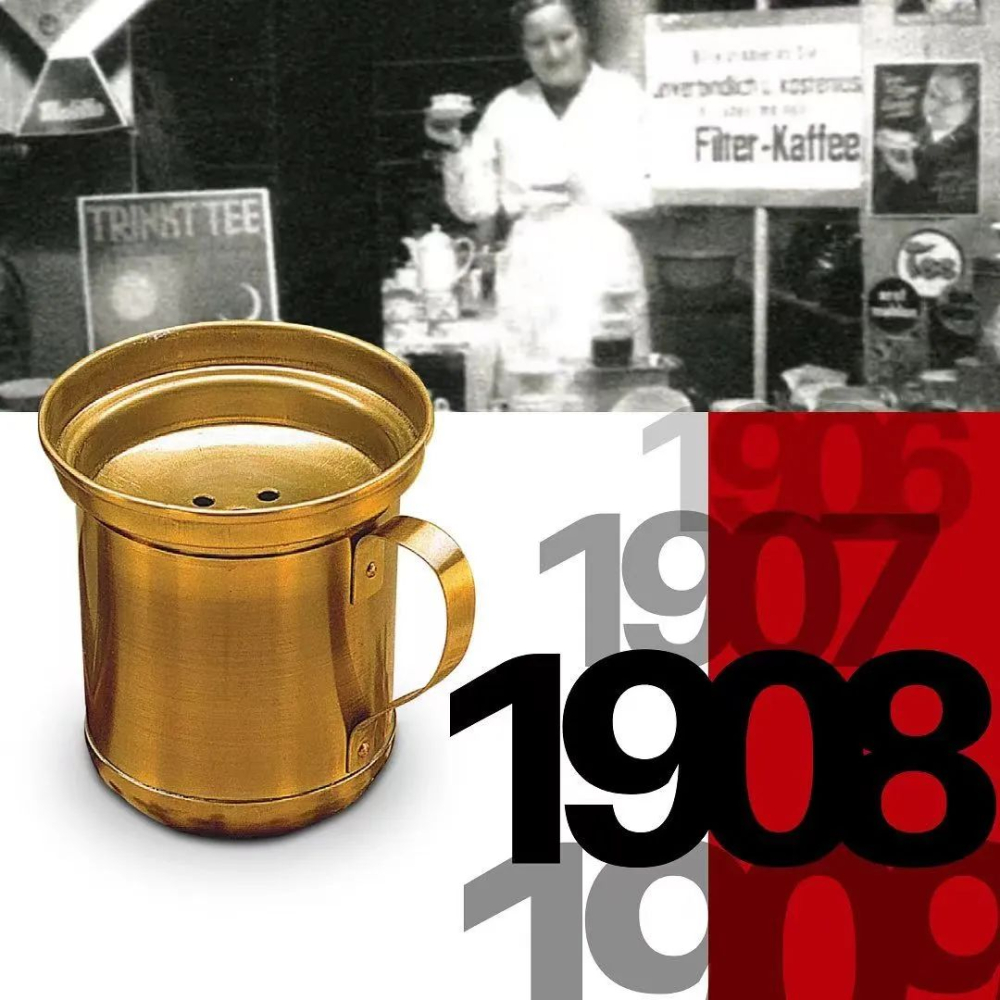
Compared with linen cloth and metal strainer, this combination designed by Melita can not only filter the residue, but also retain the aroma of coffee, which is not only low cost, but also easy to use. The most important thing is that the percolated coffee liquid is clear and slag-free, and the taste has been greatly improved.
The evolution of filter cup
In June 1908, Melita registered her invention with the Royal German Patent Office: a copper coffee filter and filter paper with a water outlet at the bottom, which may be the world's first follicular coffee cup. At the same time, she founded The Melitta Company and began officially selling hand-punching tools.
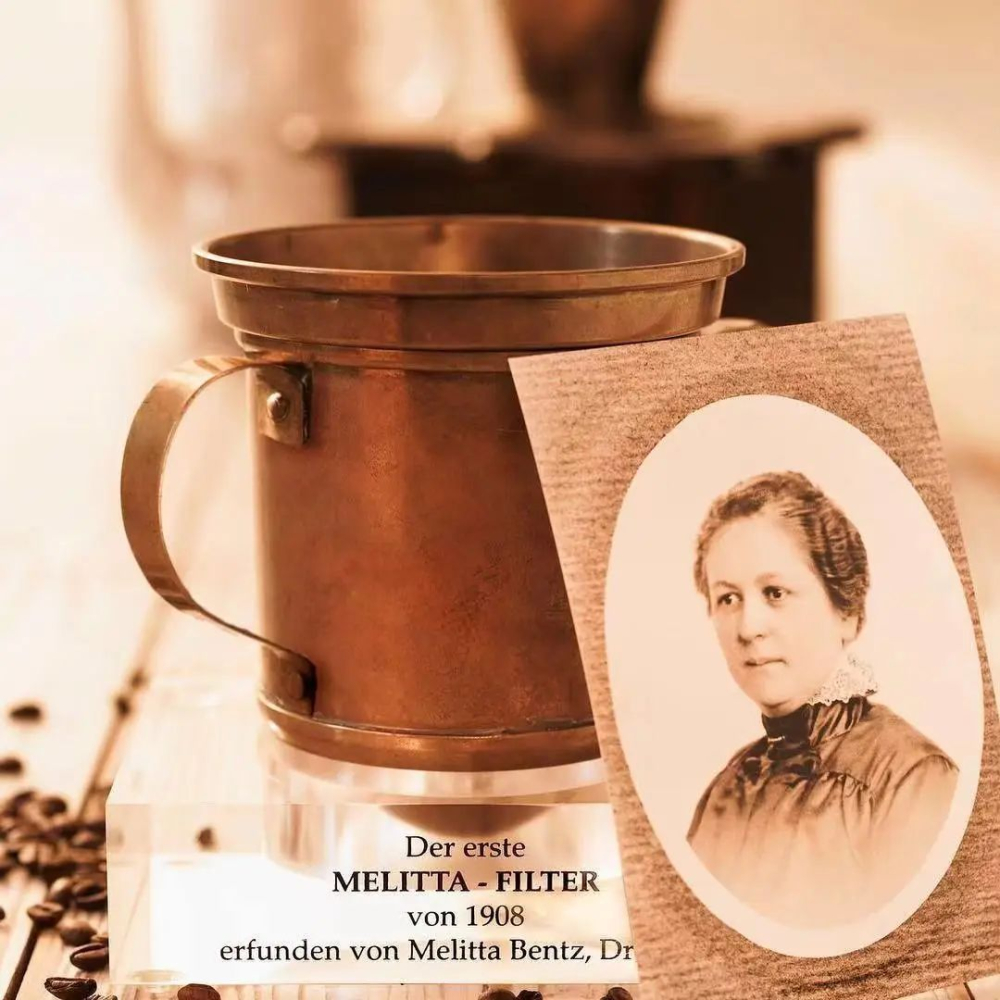
Since its establishment, Melita has repeatedly studied and optimized the shape, size, filter holes, grooves and other details of the filter cup to meet the changes of the coffee era and the needs of consumers. Hand coffee utensils continue to bring forth the new, designing a series of new products, such as the trapezoidal filter cup that we are familiar with today is the best-selling representative of Melita at that time.
During the birth of Melita filter cup, many new types of hand flushing instruments were introduced. For example, the Chemex coffee maker, developed and designed by chemist Peter Schlumbohm in 1941, is both good-looking and practical.
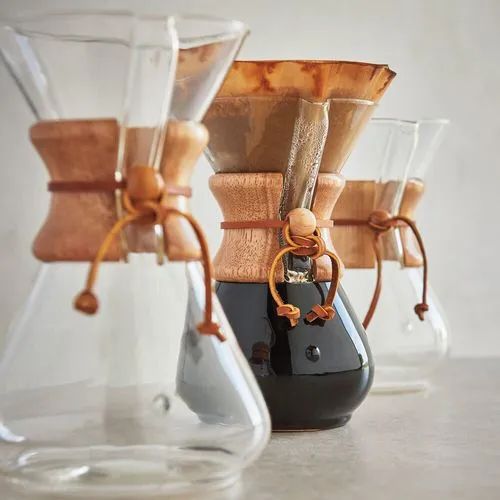
In addition, some hand flushing devices made in Japan are also very popular. Japan's Hario company was founded in 1921, the original production of thermal insulation glass products. Because the water hole of the popular Melitta filter cup at that time was small and the flow rate was too slow, the coffee powder extracted from the latter part was basically soaked. So the Hario designer changed the filter cup to a conical cup with an angle of 60 °. It makes the water flow to the center and prolongs the contact time between the water and the coffee powder. At the bottom is a large single hole design to make the water flow more smoothly.
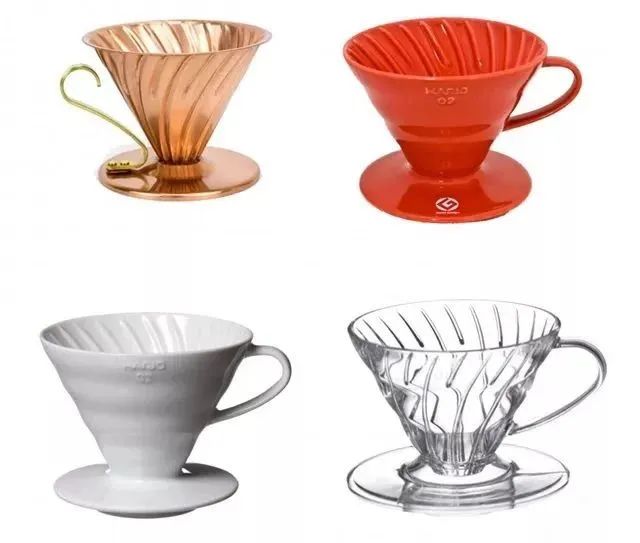
The cake cup Kalita Wave filter cup is also invented in Japan and is characterized by a flat-bottomed structure with 3 or 4 small holes to make the powder bed thinner and inclined to immersion extraction. The direct contact area between the filter paper and the filter cup is the smallest, even if the water flow accidentally rushes onto the filter paper, it will pass through the coffee powder layer to reach the sewer hole.
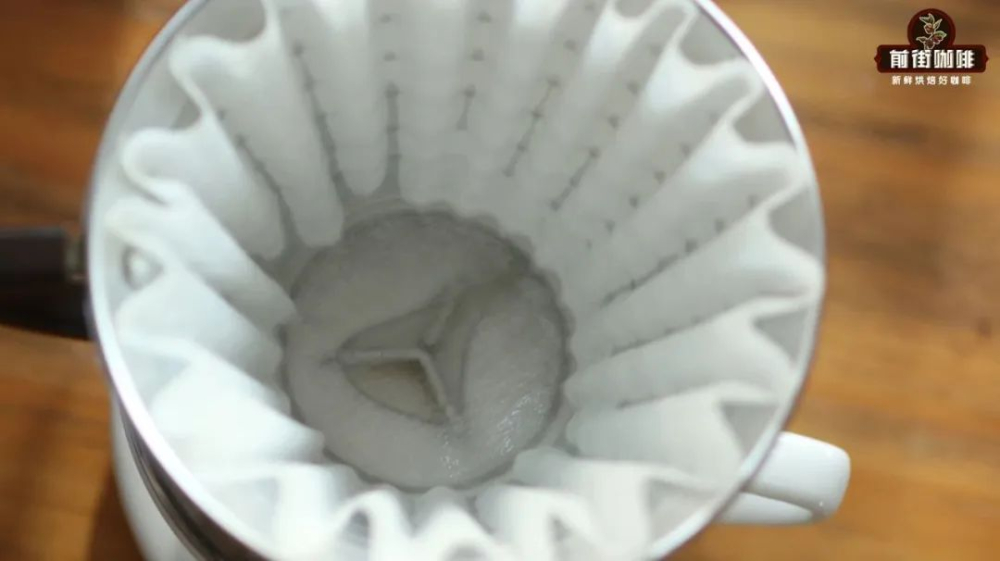
The spread of hand-made coffee
Although hand-brewed coffee was born in Germany, due to more processes and time-consuming, Italian coffee machine was later born, emphasizing the rapid rise of coffee culture, this kind of pure handmade follicle coffee did not become popular in European countries at that time. And it is the Japanese who really make hand-made coffee popular.
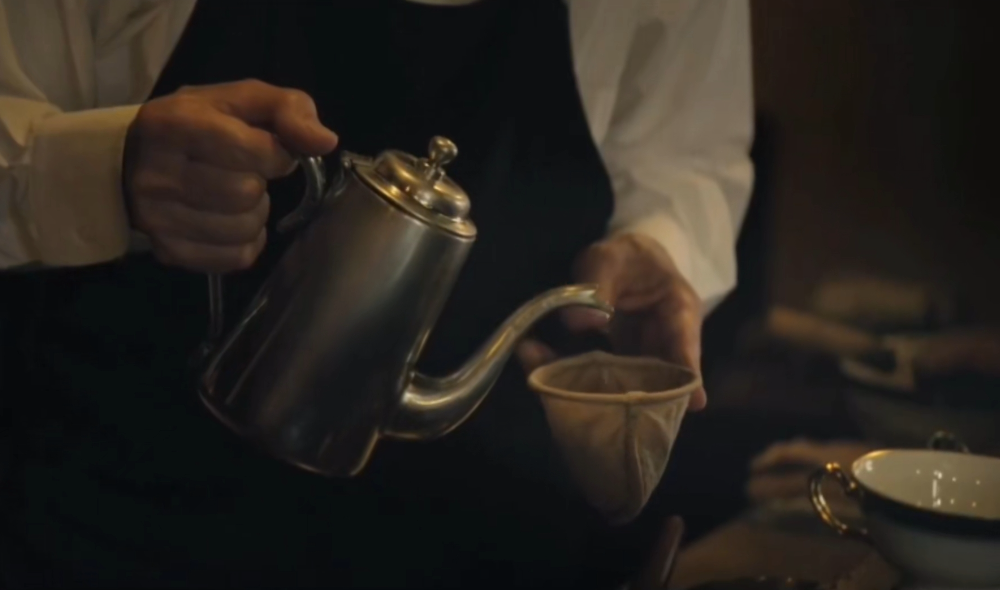
Since the 1950s, Japanese opponents have been obsessed with making coffee. The coffee filter cup appliances of various materials emerge one after another, which not only establishes a whole set of theory and operation technology of hand-brewed coffee, but also makes hand-brewing rise again with the third wave of coffee, which is loved by more and more people. and bring unprecedented prosperity.
-END-
Front Street Cafe
No. 10 Baoqian street, Yandun road, Dongshankou, Yuexiu district, Guangzhou, Guangdong province

Important Notice :
前街咖啡 FrontStreet Coffee has moved to new addredd:
FrontStreet Coffee Address: 315,Donghua East Road,GuangZhou
Tel:020 38364473
- Prev
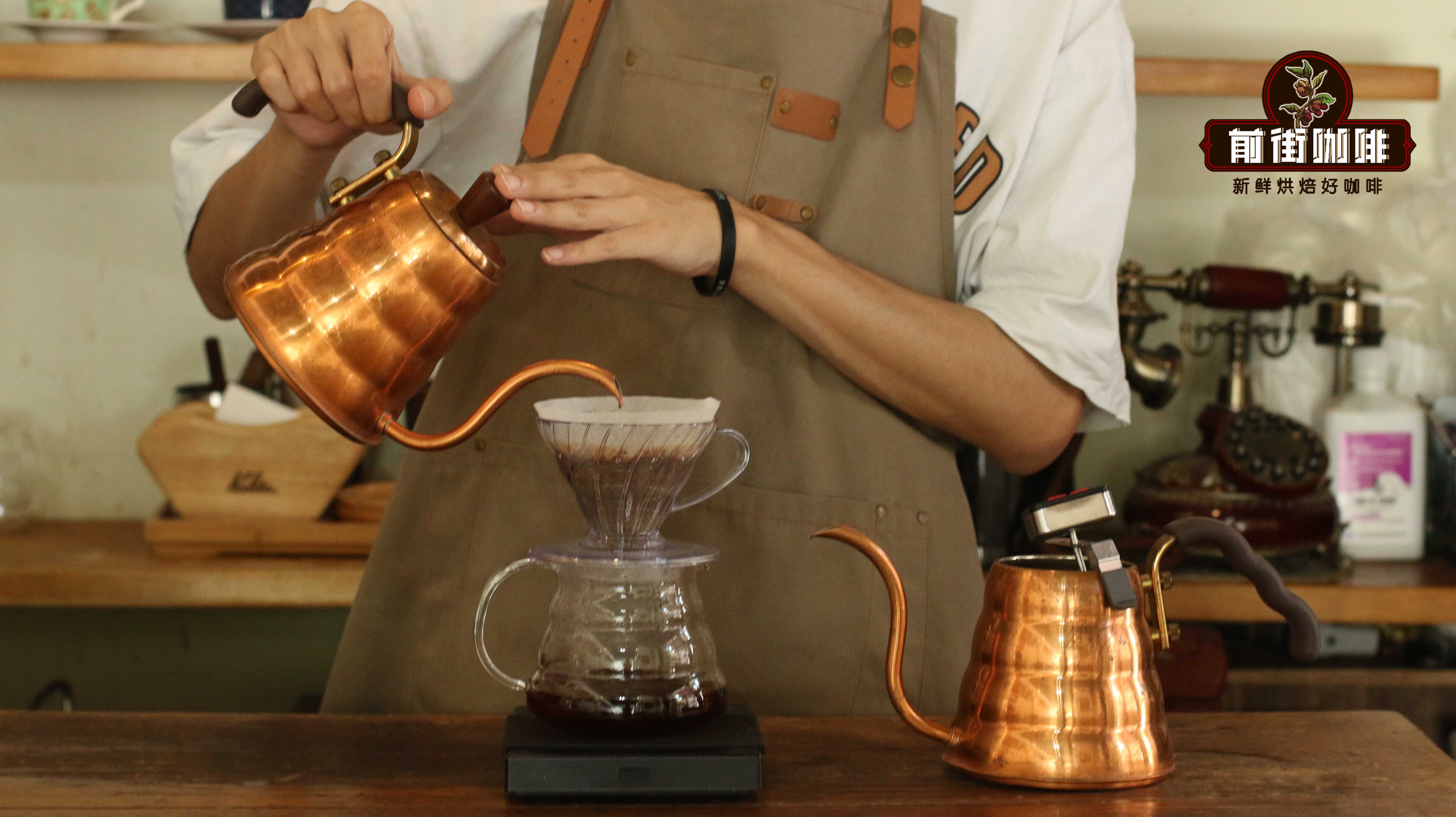
Why do you use different temperatures for hand-brewed coffee? Introduction to the technical characteristics of variable temperature cooking method
A few days ago, the world-class coffee brewing competition ended successfully, and Qianjie found that many contestants used variable temperature brewing methods on the field. At this time, some people may wonder, obviously the same coffee bean with the same method, only change the water temperature, coffee flavor will have such a change? Today, Qianjie will take you to play a little bit and change the temperature to cook.
- Next

How much caffeine is there in coffee beans? Which coffee drink contains the highest amount of caffeine?
"which coffee has the least caffeine on the menu? "I really want to drink coffee, but I'm afraid I can't sleep at night." in the eyes of most people, coffee is supposed to be a refreshing drink, but its own aroma also attracts a group of friends who pursue delicacy. Among them, caffeine is not tolerant but "greedy"
Related
- Beginners will see the "Coffee pull flower" guide!
- What is the difference between ice blog purified milk and ordinary milk coffee?
- Why is the Philippines the largest producer of crops in Liberia?
- For coffee extraction, should the fine powder be retained?
- How does extracted espresso fill pressed powder? How much strength does it take to press the powder?
- How to make jasmine cold extract coffee? Is the jasmine + latte good?
- Will this little toy really make the coffee taste better? How does Lily Drip affect coffee extraction?
- Will the action of slapping the filter cup also affect coffee extraction?
- What's the difference between powder-to-water ratio and powder-to-liquid ratio?
- What is the Ethiopian local species? What does it have to do with Heirloom native species?

